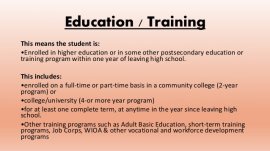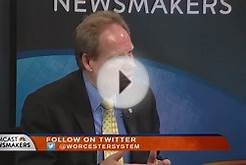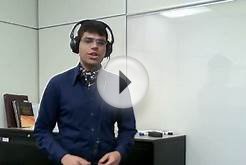For adults who have not completed elementary or secondary education, there are many adult education programs available. Some teach literacy (how to read and write) and others lead to secondary school (high school) diplomas. To learn more about adult education options, contact the ministry or department of education in the province or territory where you live.
Post-secondary education
In Canada, there are different types of post-secondary schools. Some schools are “recognized, ” which means that they can grant:
- degrees;
- diplomas;
- certificates; or
- other qualifications.
Governments have processes in place to ensure that these institutions and the programs they offer meet their standards. Other institutions do not go through government quality control and are not officially recognized. To find out whether a school is officially recognized, contact the ministry responsible for post-secondary education in the province or territory where you live. You can also check the Canadian Information Centre for International Credentials (CICIC).
At most post-secondary institutions, there are two main terms of study per year: September to December and January to April. Most schools also offer summer courses.
Universities
Universities offer programs that lead to different types of degrees in many disciplines and subjects. There are three types of degrees:
- bachelor’s degree: a basic degree given by Canadian universities that takes three to four years to complete.
- master’s degree: a more advanced degree that usually takes one to three more years of study.
- doctoral degree: the most advanced degree offered by Canadian universities. It generally requires three or more years of study and research following a master’s degree.
In regulated professions, such as medicine, law and education, students must complete an internship or pass a standardized examination in addition to completing their degree. They must complete all these steps before they can become licensed to work in their profession.
Colleges and institutes
There are many types of colleges and institutes. Some are formally recognized by governments. They are known as:
- colleges
- community colleges
- colleges of applied arts or applied technology
- institutes of technology or science
- collèges d’enseignement général et professionnel in Quebec.
Other colleges and institutes are entirely private and are usually called career colleges.
Colleges and institutes usually offer one to three year programs. They issue diplomas and certificates that qualify graduates to work in specific jobs within many different fields. These fields include:
- business
- computer and mechanical technologies
- health
- social services
- agriculture
- trades (such as carpenter, electrician and plumber)
- many others
A growing number of recognized colleges also offer bachelor’s degrees and, in some cases, master’s degrees.
Choosing a program of study and applying to post-secondary schools
You can find more information about study programs offered at Canadian universities, colleges and institutes directly from the schools themselves or from these sources:
Once you find a post-secondary program that interests you, the next step is to apply for admission. Get information about what you need to apply from the university, college or institute that has the program you want to take. The CICIC also has general information about admissions.
You will need to meet the admission requirements for any school you apply to. For programs with limited spaces, you may need to exceed the requirements. Make sure to research programs and the application process well in advance of the application deadlines.
Educational credential recognition
Before you can study at a post-secondary school in Canada, you will need to have your existing educational credentials formally recognized. Contact the post-secondary schools you are interested in to find out what kind of education assessment they require and accept.
Costs and financial help
All students must pay tuition fees for post-secondary studies. Tuition fees vary depending on the school and program. They are usually between $2, 500 and $8, 000 a year. Students must also buy course materials such as textbooks and supplies. They must also pay for:
- housing
- food
- transportation
- other expenses
Many students depend on programs to help them cover the costs of post-secondary education in Canada. In general, there are two types of financial help for students:
- student loans, which you will have to repay;
- grants, scholarships or bursaries, which you do not have to repay.
Both the federal government and the provincial or territorial governments have programs that provide low-cost loans, grants and scholarships for students. You can get information from:
Provincial and territorial student financial help
Many banks offer student loans to applicants who meet particular requirements.
Further information on loans, grants and scholarships can also be obtained from the university or college that you plan to attend.
Registered Education Savings Plans
A Registered Education Savings Plan (RESP) is a tax-free education savings account that lets parents, family members or friends save money for a child’s post-secondary education. When you open a RESP account for a child, the Government of Canada will help you save by adding money to your RESP through special programs that encourage people to save. These programs are called Canada Education Savings Grants (for children aged 17 or younger) and Canada Learning Bonds (for children aged 15 or younger).










